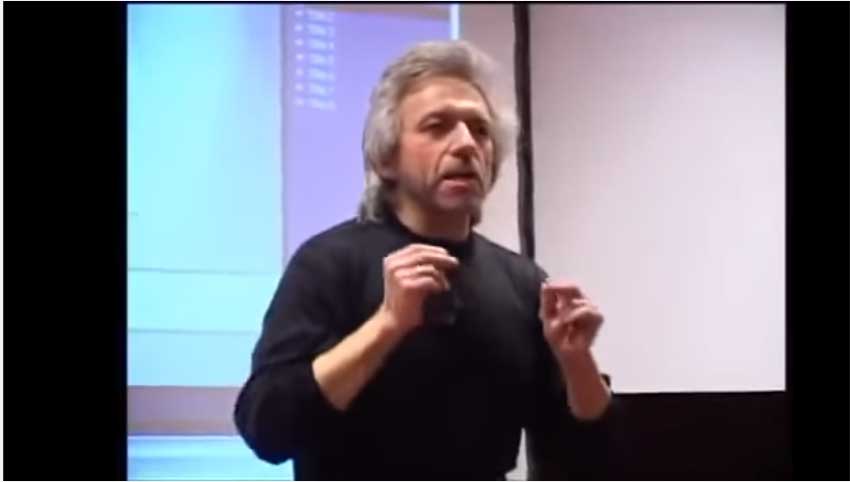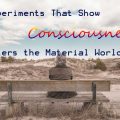Is it possible to heal yourself simply by changing your mind?
Before you read further, please note that I am not a physician and I am NOT dispensing medical advice. Everyone is responsible for their own life, and you should always consult a doctor if there’s a problem.
This article, however, is about what I believe and more importantly, what has been published in the scientific literature about the power of the mind-body connection and how the mind can heal even “incurable” conditions.
Is it Possible for the Mind to Heal the Body?
The simple answer to this question is a resounding “yes”.
Everyone has heard about the placebo effect. The placebo effect comes into play when a person takes a fake medicine or has a sham surgery or some other recommended (but useless) medical intervention, and they either improve or are completely healed.
All medical professionals and pharmaceutical manufacturers understand that a certain percentage of people will get better even with a fake sugar pill if the person believes that the medicine is real and will help them. How many improve varies, but it’s usually anywhere from 25% – 35%, and it can be up to 95%.
When new medicines undergo testing, the researchers must perform double-blind studies to see if those on the actual medicine improve more than those who improve simply because they believe they will improve. They ignore all those people who improve “on their own”, without the actual medicine.
But let’s focus on those people, instead.
There Are So Many Examples
We, as humans, like to think that we’re totally unique, and of course, in a way, we are. We have different beliefs, personalities, experiences, perceptions, likes, and dislikes.
But if you look past the surface, we’re all pretty much the same. We all share the same basic physiology. We all seek pleasure and avoid pain. We all want love, safety, happiness, and a sense that we matter or belong.
The point is, if one person shows us what’s possible because they’ve done it, there’s a pretty darn good chance that you can do it, too.
What follows are just a few examples that demonstrate the power of the mind to heal the body. If you start researching, however, you will find that there are thousands of such examples.
Dr. Bruce Mosley
Dr. Bruce Mosley took people with debilitating knee pain that had not responded to any medical treatments and scheduled them for knee surgery. However, some patients got the real knee surgery while others did not. An incision was made, and they were shown a video of someone else’s surgery, but they did not receive any actual procedure.
About a third of those who received the real surgery said their knee pain was resolved, but the same amount of people getting the sham surgery said the same thing! There were times during the two-year follow-up period where those who got the real surgery reported more knee pain than those who got the fake surgery.
Mr. Wright
In 1957, the UCLA psychologist who pioneered the famous Rorschach Ink Blot Test, Dr. Bruno Klopfer, published a case study about a patient named Mr. Wright.
Mr. Wright had advanced lymphosarcoma, and he had tumors the size of oranges throughout his neck, chest, abdomen, armpits, and groin. The cancer was so advanced that his chest was filling with fluid, and it was being drained every day so that he could breathe. He was about a week away from dying, according to his doctor.
Mr. Wright read about a new drug called Krebiozen, and he just knew that this drug would cure him, so he begged his doctor for it. The doctor got some and injected it on a Friday. The doctor thought he’d be dead by Monday.
On Monday, Mr. Wright was up and walking around, and his tumors “had melted like snowballs on a hot stove”, according to the doctor’s report. In 3 days, the tumors were half their original size. Ten days later, Mr. Wright was completely cancer-free, and he left the hospital.
He was fine for two months. Then he read reports stating the Krebiozen was not effective. As a result, he fell into a deep depression, and his cancer returned.
His doctor wanted to help, so he lied. He told Mr. Wright that that was just a bad batch, and that the drug was, indeed, effective. He said he got a new batch that was even more effective than the first batch. The doctor injected Mr. Wright with distilled water, claiming that it was the effective batch of the drug.
Once again, the tumors disappeared, the fluid in his chest went away, and he was fine – for another two months.
Then Mr. Wright read a report published by the American Medical Association saying the drug was utterly worthless and was being pulled from further trials. At that point, Mr. Wright became depressed, his tumors returned, and in two days, he was dead.
The Nocebo Effect
In addition to studies of the amazing power of the mind to heal, there are also stories about the nocebo effect – how fear and negative thinking brings on disease and illness.
These are just two examples demonstrating the power of the mind to heal the body, but there are so many more. At the end of this article, I’ll provide a list of resources where you can go to find more.
The “Outliers”
Even though medical and scientific professionals have known about the power of the mind to heal for hundreds, if not thousands, of years, the mechanisms by which the mind heals the body are just beginning to be explored in depth.
Typically, those who healed themselves without being treated with “effective” medicine (or surgery or whatever treatment modality was popular at the time) were “outliers”. They were seen more as a nuisance – something that messed up the data on clinical trials. They were the cases that were to be ignored and excluded from the “real” data.
Only recently have these “outliers” become the focus of research to determine how the body heals using the power of the mind.
How Does It Work?
We don’t know everything about exactly how the mind heals the body, but there are things we do know:
-
Thoughts and feelings cause the brain to release certain chemical and electrical responses in the body. When you have a thought, the brain releases corresponding chemicals and electrical signals which then create a cascade of chain reactions that travel throughout your entire body.
-
The body is capable of producing an amazing array of pharmacological chemicals, including chemicals that mimic medicines.
Some studies have taken patients and given them a certain medicine, for example, an asthma medication. The patient immediately responds and gets better when they take the medicine. Then, the actual medicine is substituted for saline solution. However, the body then continues to produce chemicals that mimic the actual medicine, and the patient still gets better, even though they are not being given any actual medicine.
-
Stress reduction and relaxation is important. Stress causes the immune system to shut down, but studies show that those who meditate or practice relaxation exercises improve the functioning of their immune system. The immune system is a key component in healing, regardless of the malady.
-
Optimists heal better and faster than pessimists. A positive outlook and using positive self-talk seem to play a big role in helping the body to heal.
-
People who belong to a group, feel connected to others, or have social support are more likely to heal than those who are isolated and lonely.
-
Visualization changes both the brain and the body. The brain cannot distinguish between what you imagine and what is really occurring “out there”. Logically, we know the difference, but on a subconscious level, what you imagine is the same as what is real.
There are many studies focusing on athletes. They all show that when you visualize the end result in your mind as if it has already occurred, it actually helps to create that result in the real world.
A Harvard University study showed that people who mentally practiced a song on the piano in their minds daily for several weeks strengthened the area in the brain responsible for finger strength. This is powerful proof that thinking alone can produce physical changes.
-
You must truly believe that you are healed. Wishful thinking doesn’t cut it. You should know it as fact, and feel and act as if it is an undeniable fact right now in this moment.
-
No disease is “incurable”. There have been people with stage 4 cancer who were deemed “incurable” and given just days to live by their physicians who have completely recovered.
-
Lifestyle changes often go hand-in-hand with mental changes. The mind, the body, and the environment all work together in a connected web. While many people have cured themselves using only their mind, many more have added lifestyle changes into the mix for improved results. Bruce Lipton, in his book, Biology of Belief, talks about how improving the environment of sick cells transforms them into healthy cells.
A Case Study to Think About
Gregg Braden presents a video from a hospital in Beijing where practitioners use mind energy to heal a bladder tumor in 2 minutes 40 seconds. (You can start at 00:01:20). Take a look:
Where to Get More Information
If you’d like to find out more about how to use your mind to heal your body, there are plenty of sources of information.
There are case studies, which are simply individual stories of individuals who have used the power of thought to heal their body. While case studies are not scientific proof, they provide evidence of what is possible. “If this person did it, I can, too!”.
Sources include medical doctors, research scientists, scientific papers published in peer-reviewed journals, alternative healers, and personal accounts. I invite you to use all of them to further your knowledge in this area.
Here are some great resources to get you started:
1. Books
- Biology of Belief
- Mind Over Medicine
- The Spontaneous Healing of Belief
- You Are the Placebo
- Anatomy of an Illness
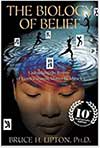 In Biology of Belief, Richard H. Lipton, PhD tells his story of how, as a cell biologist, he came to the conclusion that it is beliefs that affect biology. He uses his work with cells as examples.
In Biology of Belief, Richard H. Lipton, PhD tells his story of how, as a cell biologist, he came to the conclusion that it is beliefs that affect biology. He uses his work with cells as examples. This is the personal story of Morris “The Miracle Man” Goodman. He was a successful businessman when his plane crashed. His body was destroyed, but he didn’t die. Instead, he was on a ventilator that breathed for him, and he was unable to speak or move. The doctor’s believed his body was too injured to recover. He had other plans, however.
This is the personal story of Morris “The Miracle Man” Goodman. He was a successful businessman when his plane crashed. His body was destroyed, but he didn’t die. Instead, he was on a ventilator that breathed for him, and he was unable to speak or move. The doctor’s believed his body was too injured to recover. He had other plans, however.
As he laid in his hospital bed, he imagined himself being able to breathe without the ventilator. He kept at it all day every day until one day, they did what they said was impossible – they took him off the ventilator. Then, he went to work on walking out of the hospital. He imagined it and practiced it in his mind over and over. Long story short – he walked out of the hospital many months later his own two feet.
2. Peer-Reviewed Papers
If you prefer to read papers published in peer-reviewed scientific journals, you can spend weeks finding research papers and case studies at Google Scholar or PubMed.
3. Websites
- The Center for Mind-Body Medicine
- Whole Health Medicine Institute
- Chris Wark
- Institute of Noetic Sciences
- Deepak Chopra
Useful Tools
Here are some useful tools to help you relax so you can get your body into healing mode.
Fixing mental blocks are crucial to healing, and sometimes you need help to do that. This website offers hundreds of self-help, downloadable audio files to help you relax and overcome whatever obstacle is standing in your way.
They have one to Boost Your Immune System and another called Healing Power Hypnosis.
A Final Word of Caution
When anyone talks about the power of the mind to heal the body, a lot of people immediately dismiss it, saying “Aw…that’s a bunch of hogwash”. Of course, it is not.
However, every person and every situation is different. Don’t fall into the trap of guilt or blame.
These are techniques to use and try to see what they do for you. But sometimes, people do everything right and things don’t turn out as planned.
There is no blame. Don’t fall into the trap of saying “I failed! I didn’t do it right! I’m not smart enough!”, or any of the other negative thoughts that we use to berate ourselves and others.

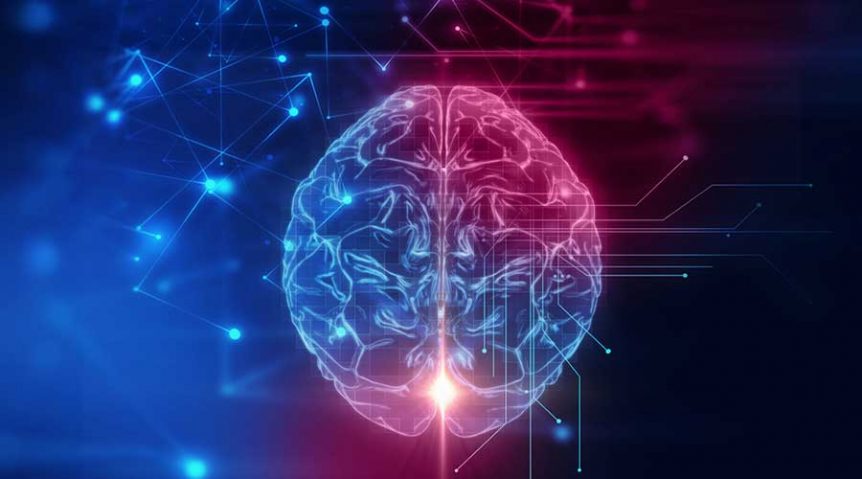

 Mind Over Medicine: Scientific Proof That You Can Heal Yourself
Mind Over Medicine: Scientific Proof That You Can Heal Yourself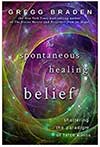 This book
This book You Are the Placebo by Dr. Joe Dispenza
You Are the Placebo by Dr. Joe Dispenza This is Norman Cousins’ personal story
This is Norman Cousins’ personal story Deepak Chopra
Deepak Chopra 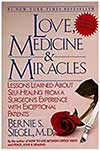 Bernie Siegel, M.D.
Bernie Siegel, M.D. 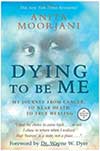 This is Anita Moorjani’s personal account
This is Anita Moorjani’s personal account